Life has often been hard in this country,
and this has made people turn to a god
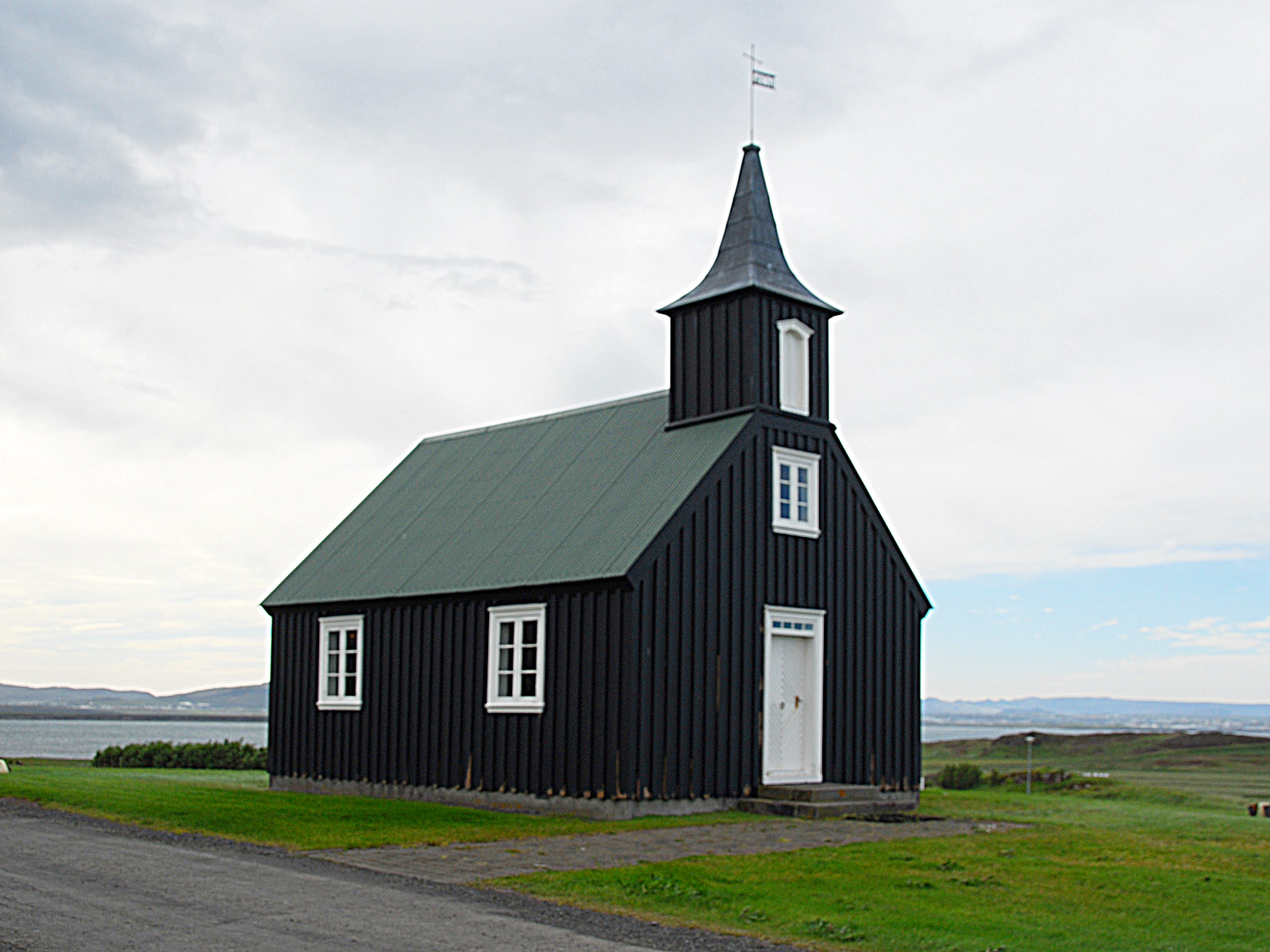
(2013-08-05)
The small Brautarholtskirkja, built 1853, stands in Kjalarnes (600 inhabitants), near Hofsvík, across the bay north of Reykjavík. There is another black church further north, in Búðir, Snæfellsnes.
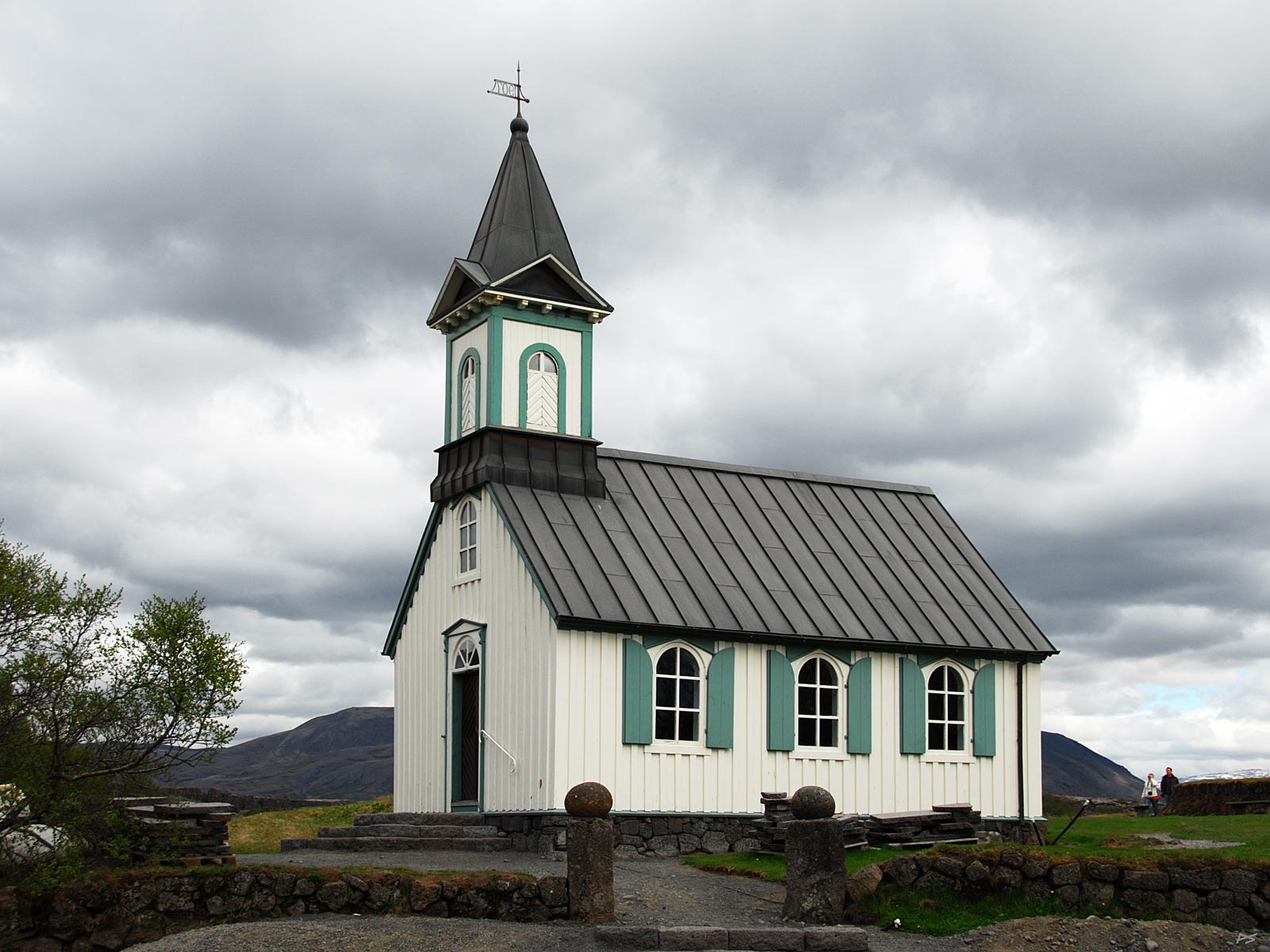
(2010-06-01)
Þingvallakirkja, the church at the former thingstead Þingvellir has been there for a thousand years, but the present one was built in 1859.
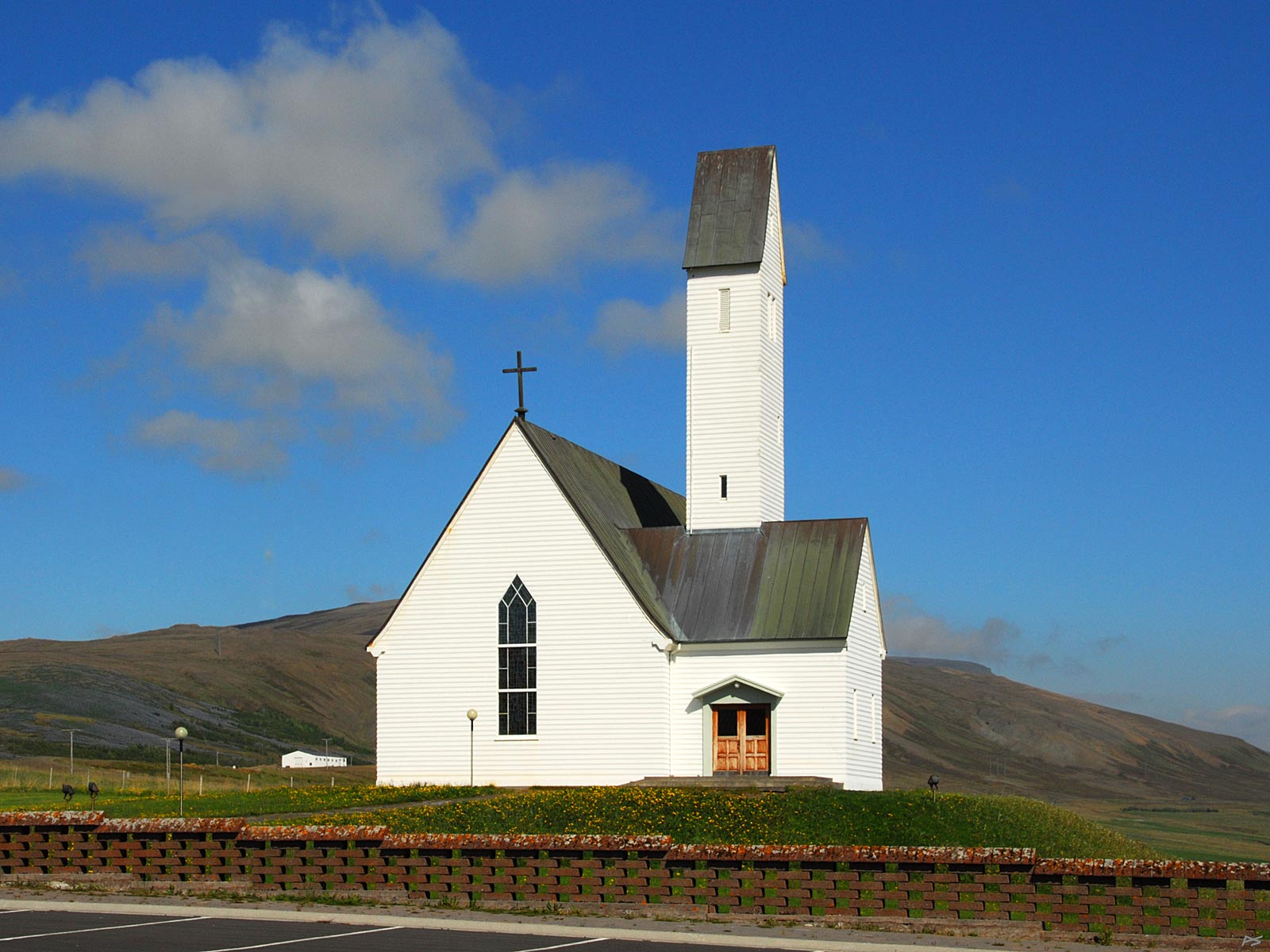
(2010-06-08)
Hallgrímskirkja in Saurbær, built 1957, is named in honour of the great Icelandic poet Hallgrímur Pétursson (1614-1674), which is also the case for the monumental Hallgrímskirkja in Reykjavík. This smaller church is situated near Reykjavík, on the north side of Hvalfjörður. The main road went past it and around the fjord until a tunnel under the fjord opened in 1998. Hallgrímur was minister in this district for some years.


(2010-06-08)
This new Reykholtkirkja was consecrated in 1996 and the Snorrastofa Cultural and Medieval Centre, the extension to the left, was opened in 2000. This is on the farm where the writer, historian and politician Snorri Sturluson (1178–1241) lived – and was murdered.
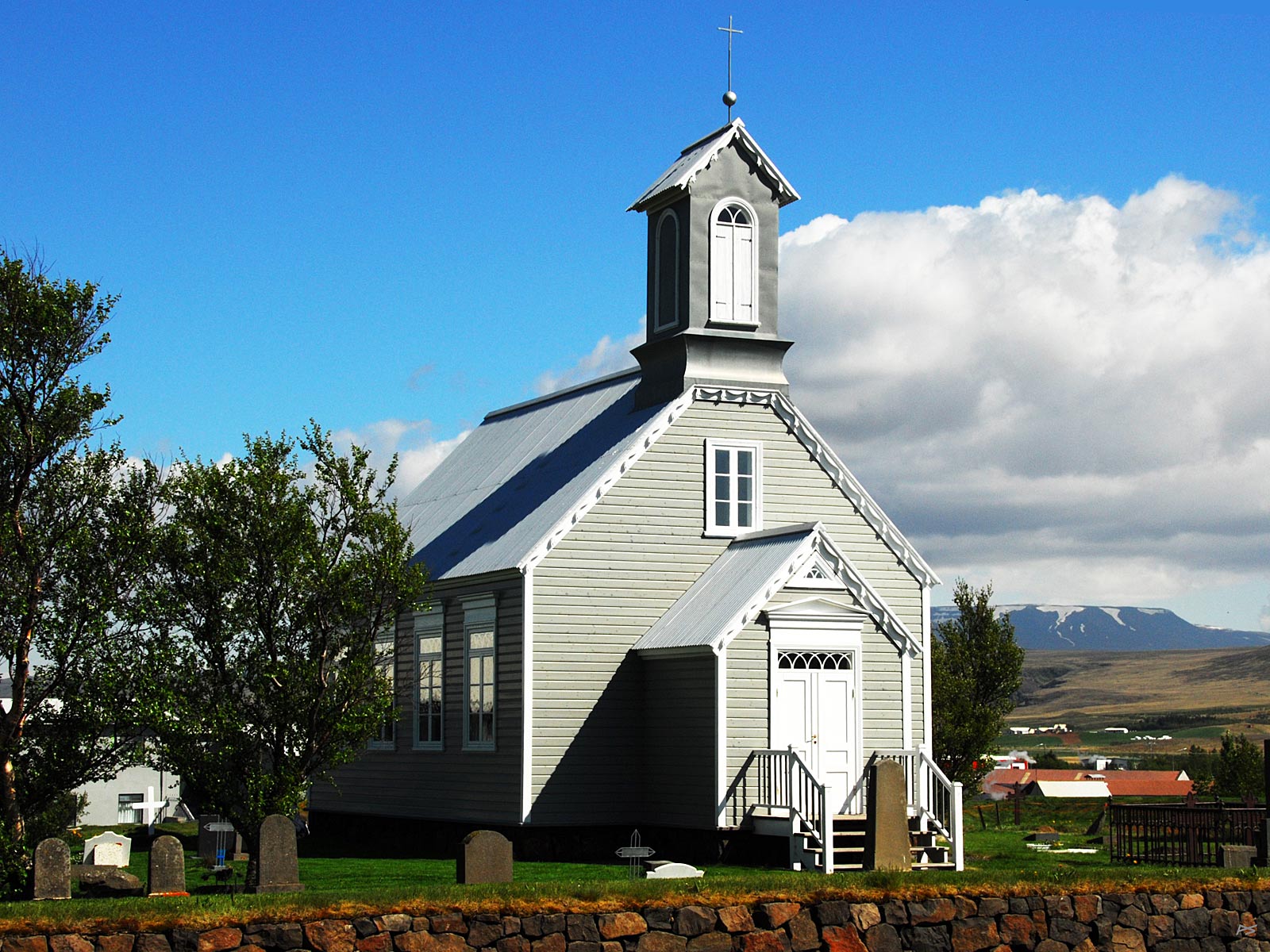
(2010-06-08)
The old Reykholtkirkja was built in 1887. It stand right behind the new church and Snorrastofa.
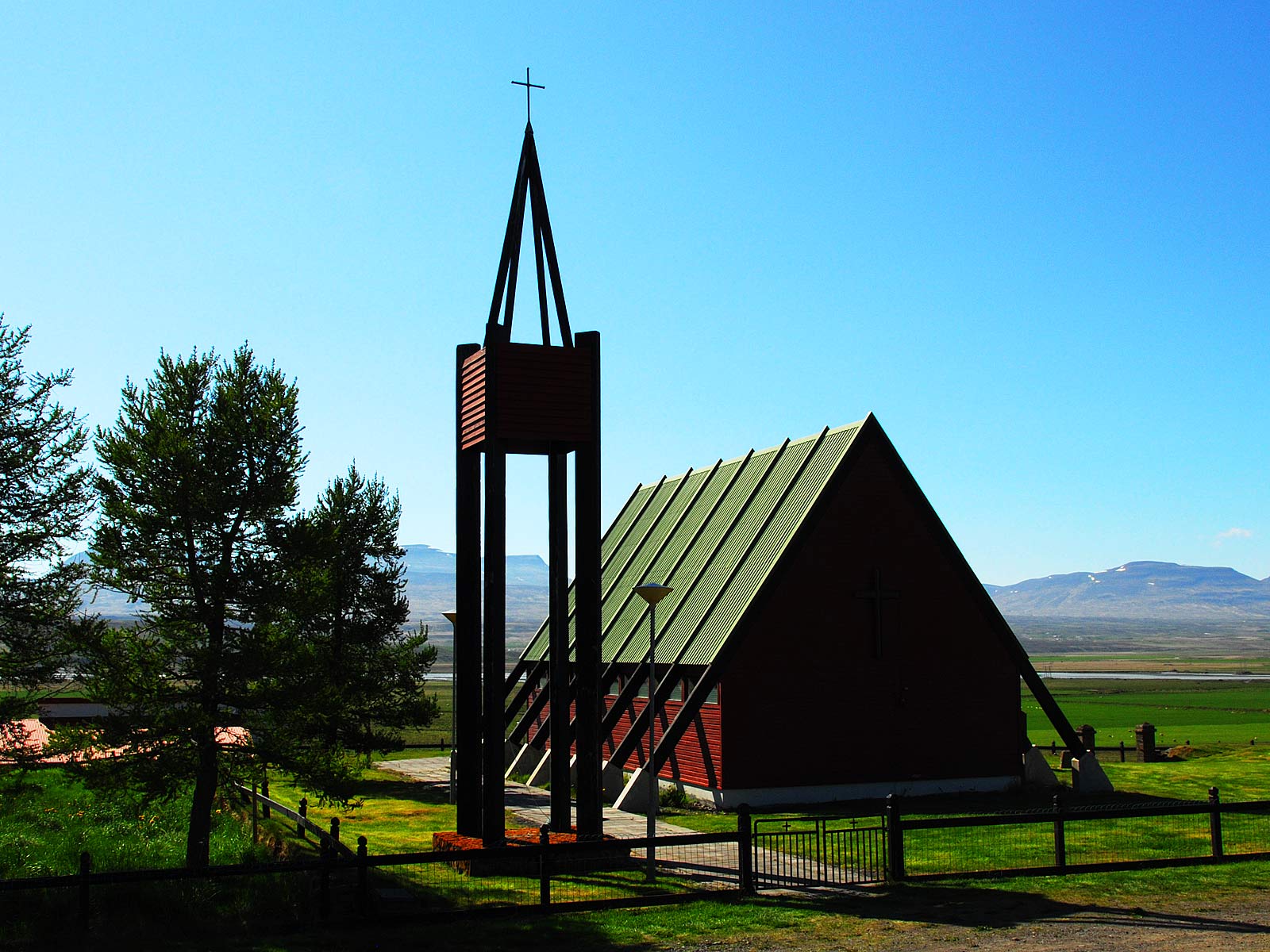
(2010-06-07)
Miklabæjarkirkja, the church in Miklibær i Blönduhlið, was built in 1973 when the old church had burnt down. This is in the Skagafjördur district, it stands close to the Ring Road east of Varmahlið.
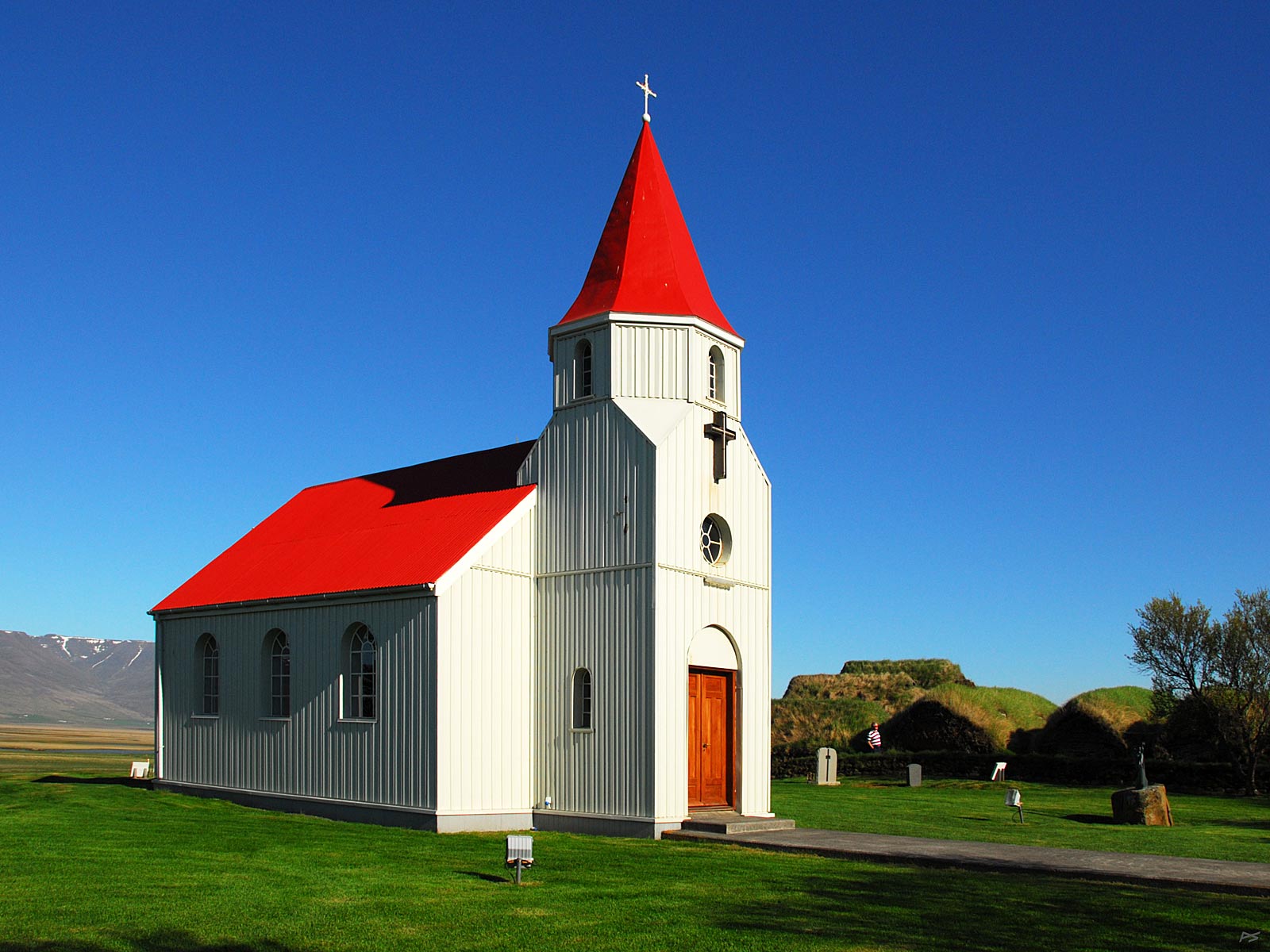
(2010-06-07)
Glaumbæjarkirkja is situated on rout 75 south of Sauðárkrókur, north of Varmahlið on the west side of the wide and shallow Héraðsvötn river valley. It was built in 1925–26. Close by you'll find the Skagafjördur Folk museum on Glaumbær, exhibiting (wood-)turf houses from the eighteen hundreds, visible to the right.

(2010-06-07)
Reykjahlíðarkirkja on the east side of Mývatn was build in 1972. An older church on the same site was the only building spared when an eruption in the Krafla area covered the surrounding area by lava in 1729.
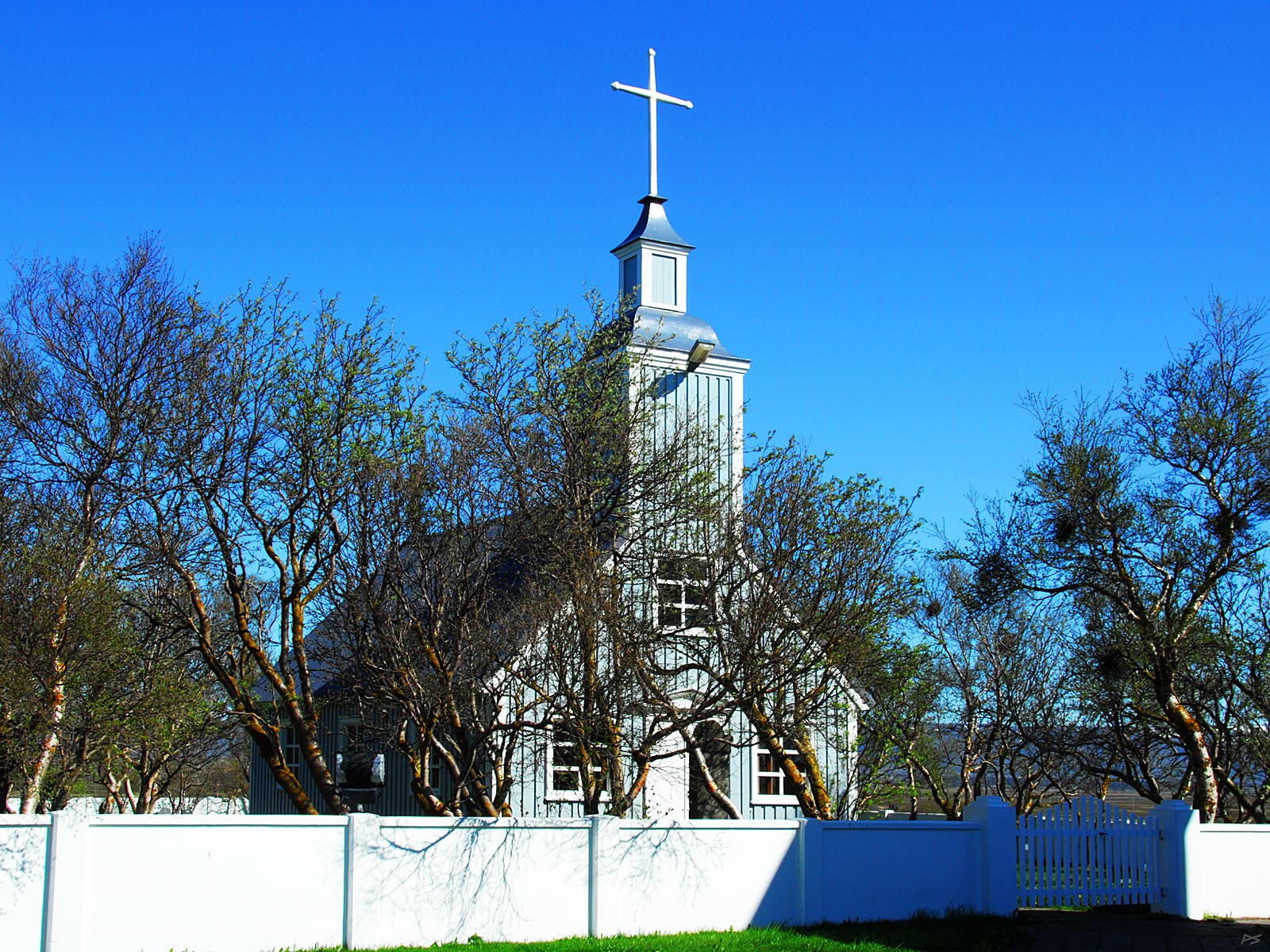
(2010-06-06)
Skútustaðakirkja, built 1861–63 on the south side of the lake Mývatn. If you have seen the rest of my website you may have noticed that one of my favourite objects are churches. In Norway churches hidden among trees are often a problem for a photographer. Trees are easy to plant, but it's very difficult to obtain a consensus to remove any of them. This might be even more true on this barren island. You may note that the leaves of the birches are still small; the spring is very late here this year.

(2010-06-01)
Stóruborgarkirkja was moved here from a nearby ancient church site, Klausturhólum í Grimsnesi, in 1931. Stora-Borg is found at Rout 35 northwest of Selfoss.
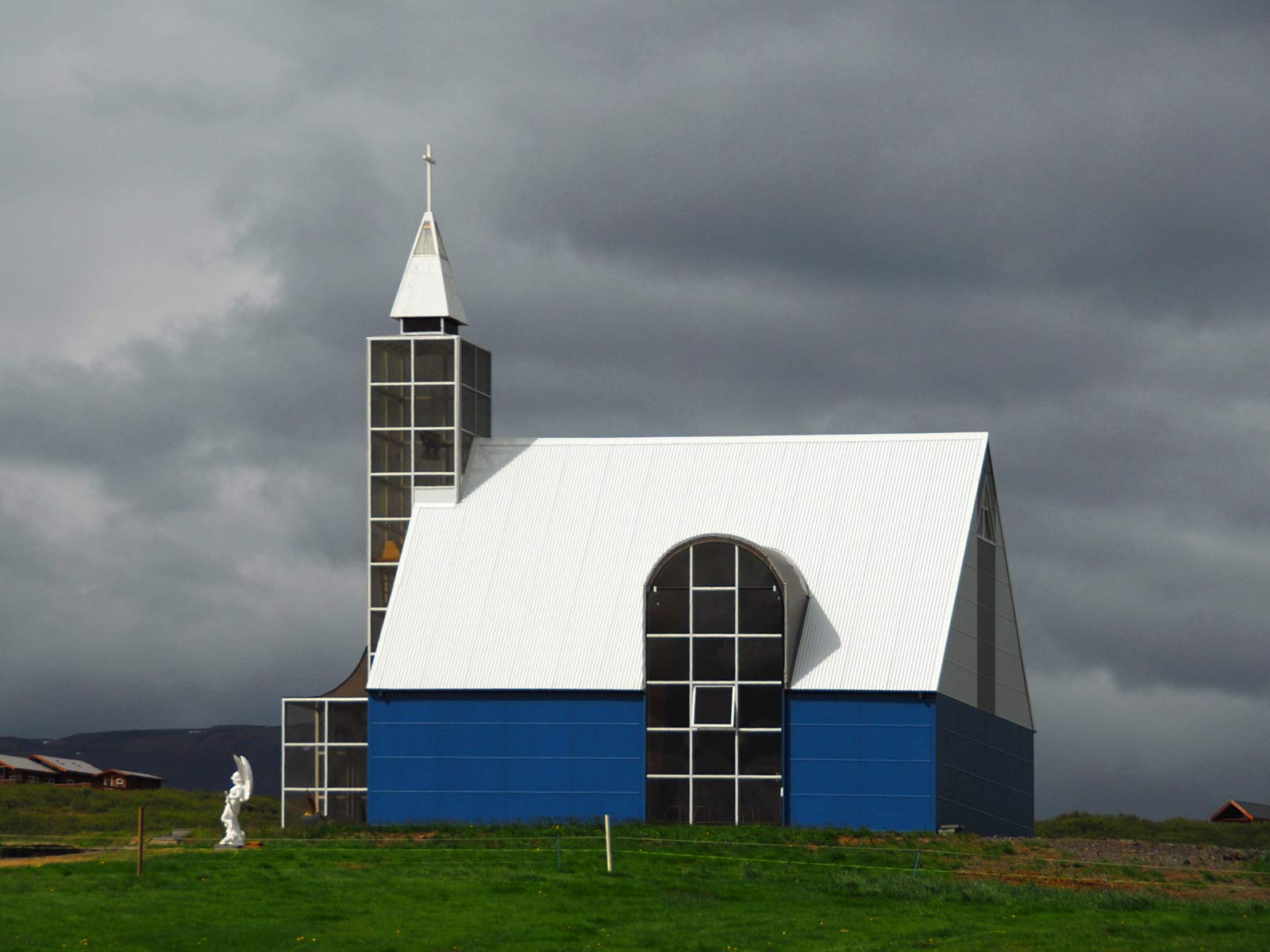
(2010-06-01)
Úthlíðarkirkja on the farm Úthlíð a few kilometres west of Stóri Geysir. The 60 seats church was built in 2005–6 by the farmer Björn Sigurðsson in memory of his wife Ágústa Ólafsdóttir who died in 2004. A former church on this site was destroyed by a storm in 1935.
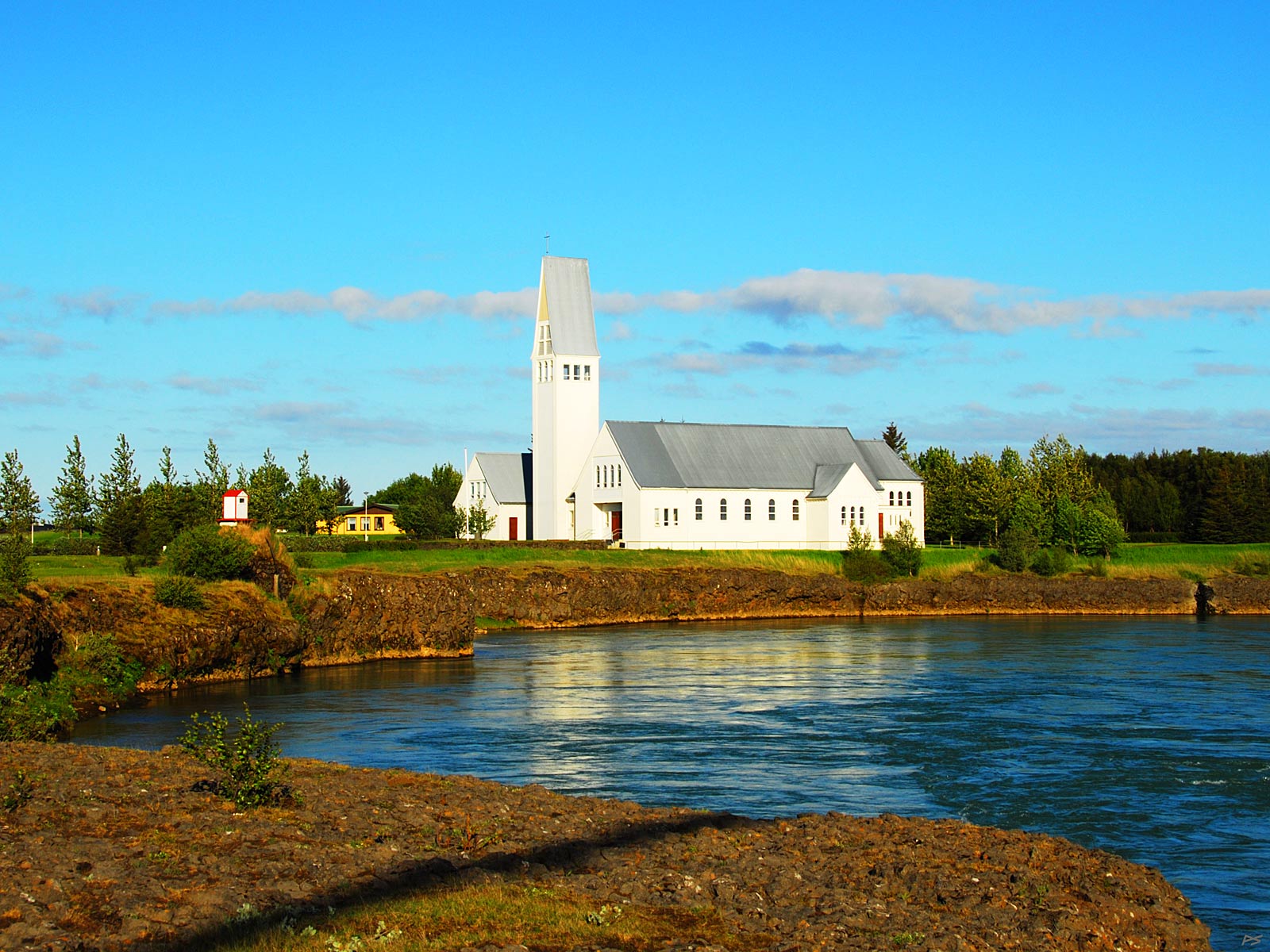
(2010-06-01)
Selfosskirkja, built 1952–56 on the bank of the river Ölfusá. During 1978–84 it was expanded with a tower and congregation centre.
The tiny white and red house on the brink contains monitoring equipment for the water level; you'll find these houses on many river banks. Ölfusá is Island's largest river, formed by Hvítá (essentially from Langjökull, through Gullfoss) and Sog (from Þingvallavatn). Selfoss is a town with 6000 inhabitants. The name Sel-foss means 'seal-waterfall'. In the rapids further down the river seals often appear. (Not to be confused with Selfoss in the river Jökulsá á Fjöllum in North Iceland, which is a waterfall just south of Dettifoss.)

(2010-06-01)
Inside the Selfoss church – Selfosskirkja.
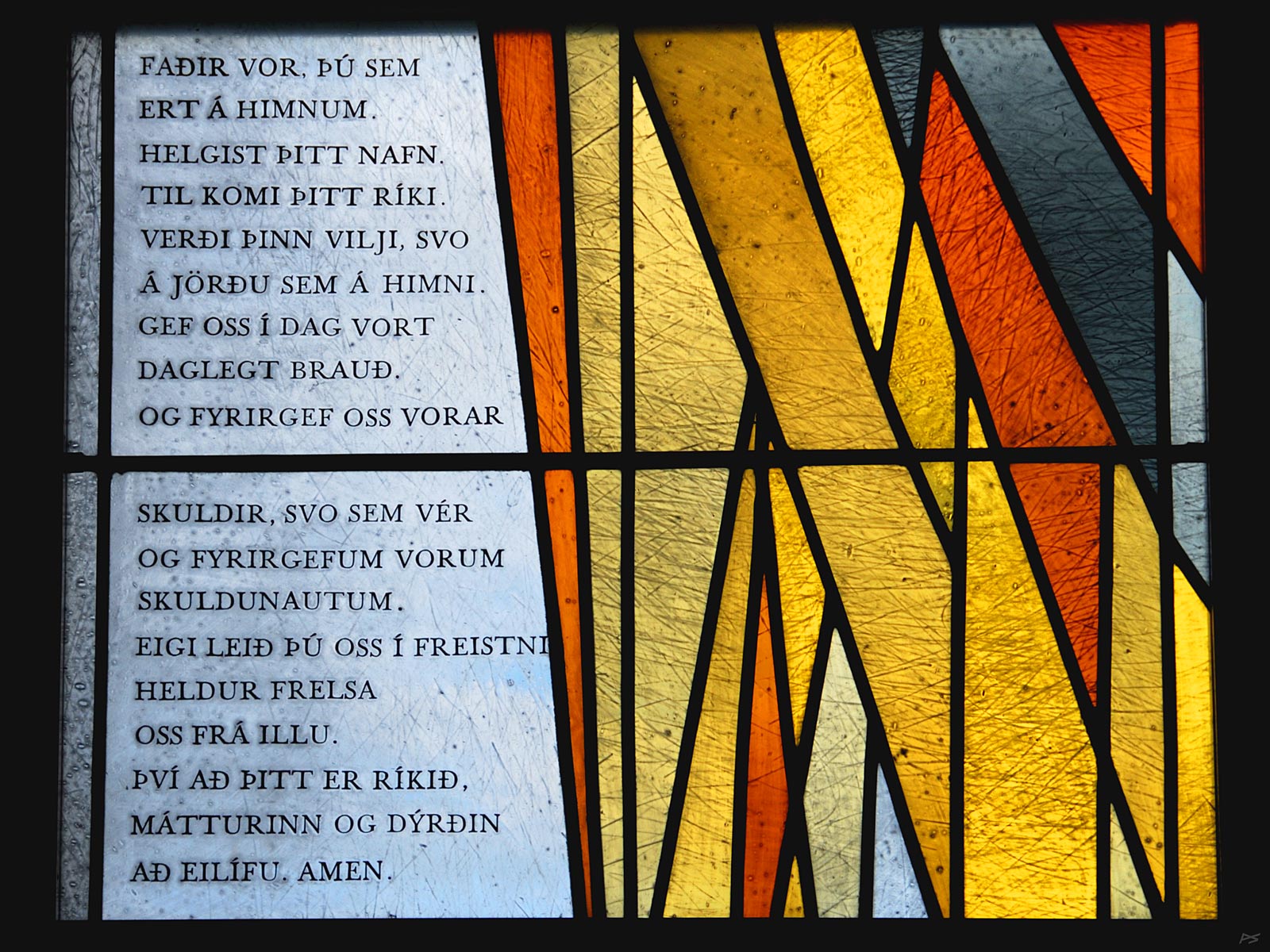
(2010-06-01)
A window painting in the Selfoss church. To the left the Icelandic version of the Christian Lord's Prayer. 'Faðir vor, þú sem ert á himnum' means 'Our Father, you who are in Heaven'.
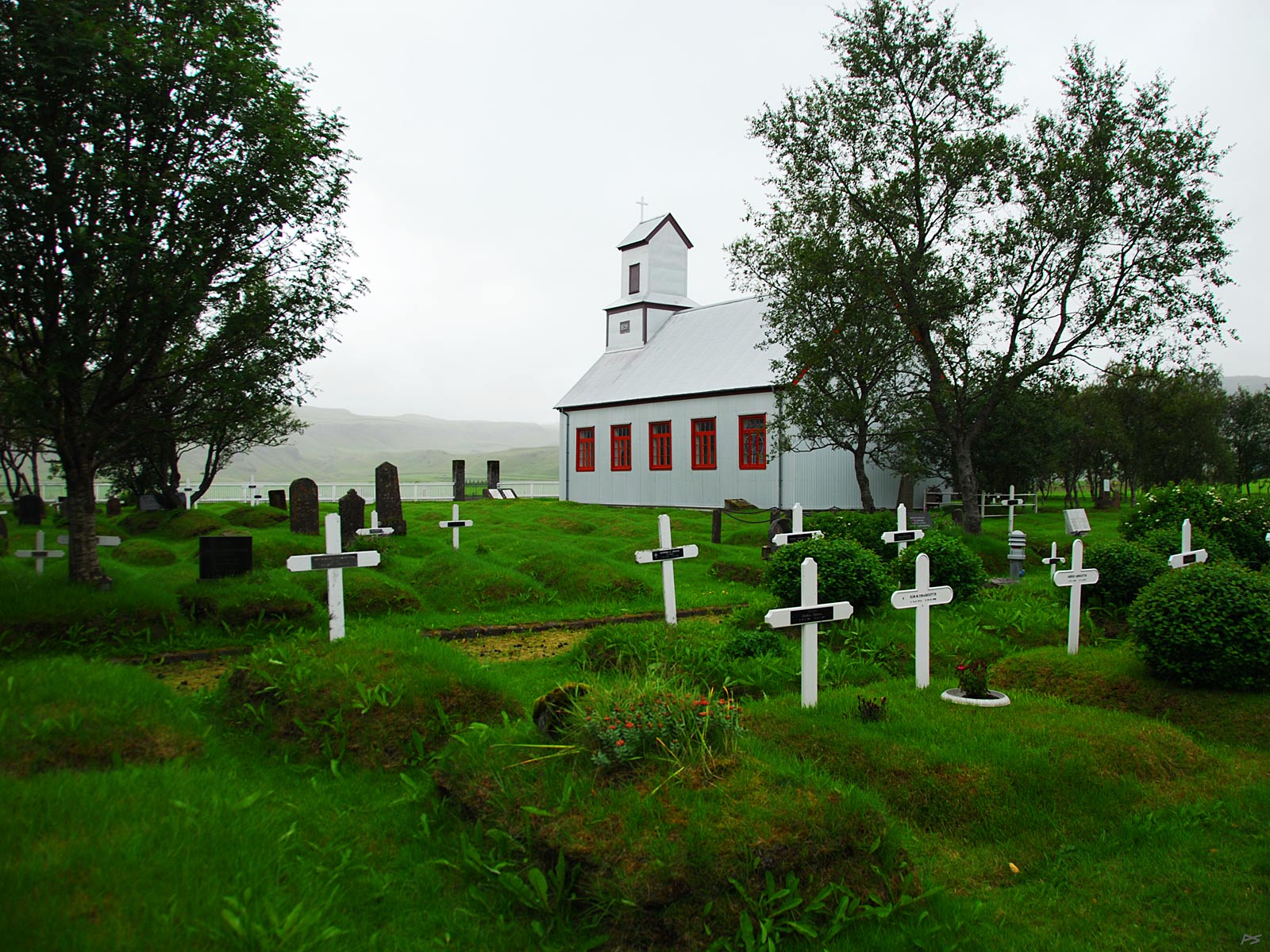
(2013-08-10)
The Prestbaki church close to Kirkjubæjarklaustur
As in most Icelandic graveyards, many or all graves are raised, probably built up by turf. I can only guess why this custom has evolved. Most of this country has little or no topsoil, so in many places digging deep may be impossible. I might be wrong – does anybody know?
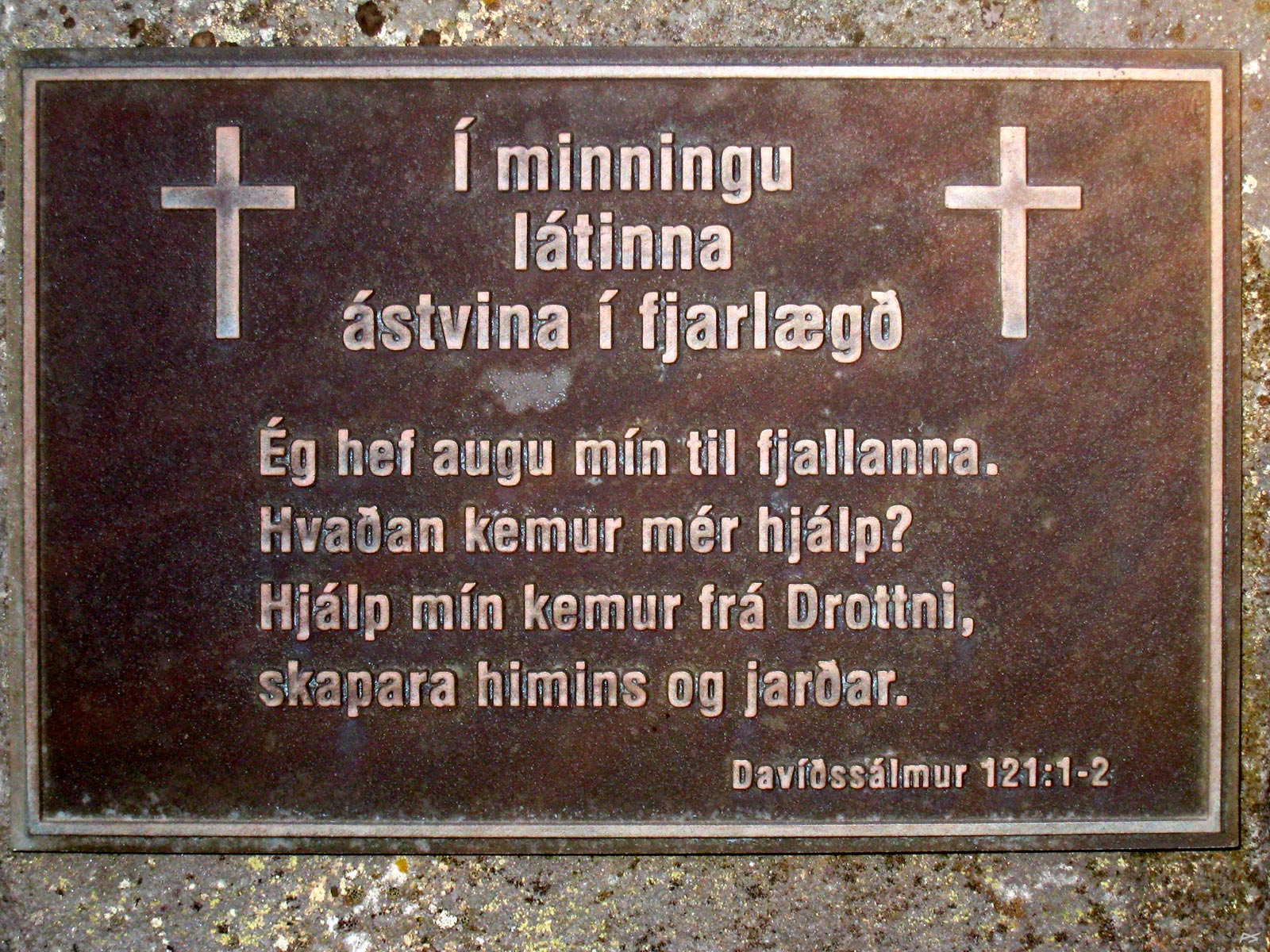
(2010-06-03)
Inscription on a gravestone without a grave in the Höfn cemetery:
In memory of
the deceased
beloved far away
|
I lift my eyes to the mountains. David's Psalm 121:1-2 |
Icelanders have always been fishing, and Höfn is, as the name says, a harbour. In the middle of the Atlantic Ocean. Therefore many deceased do not rest in consecrated soil.
